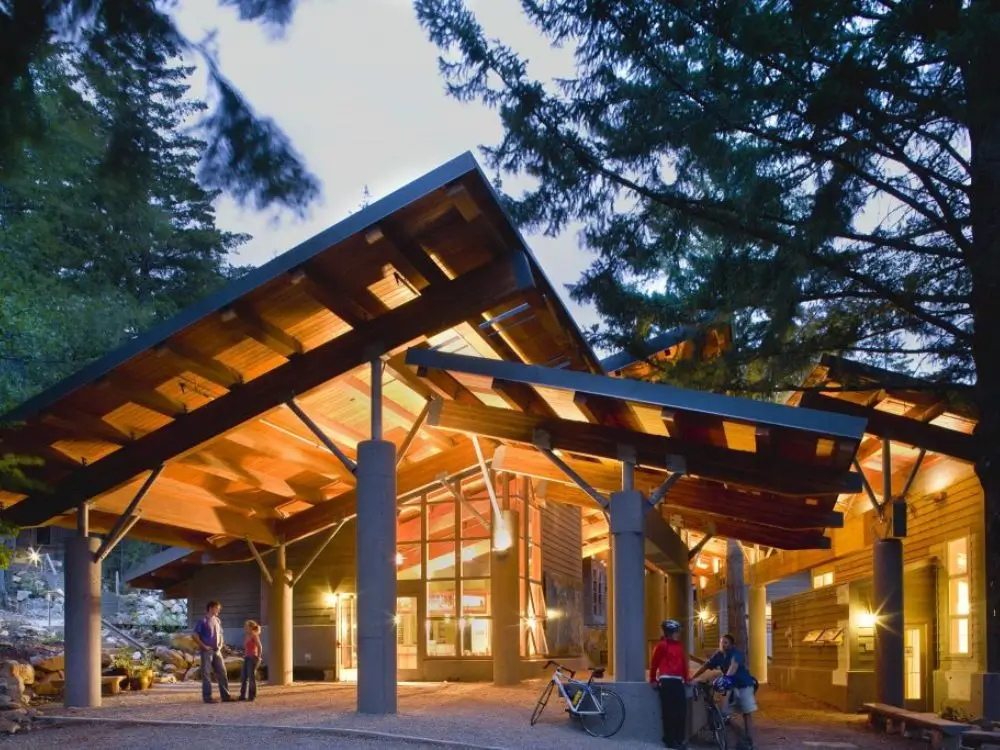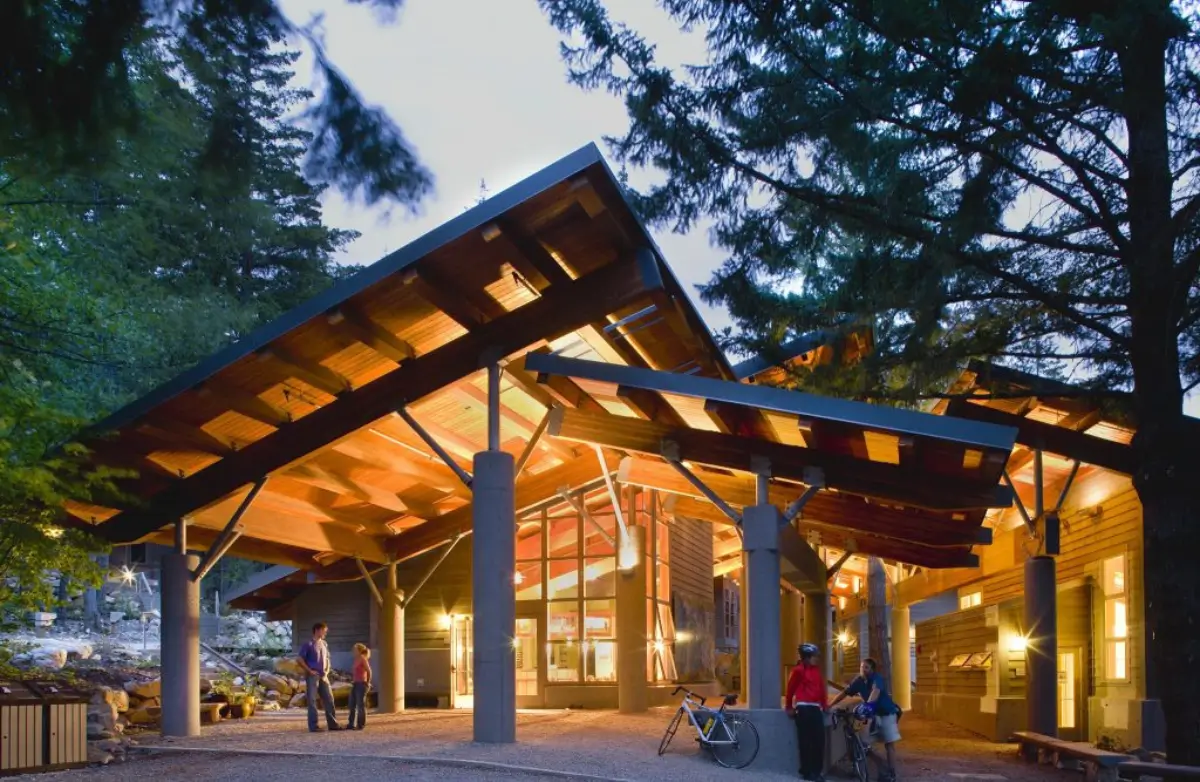Things To Do
In North Cascades

Top 8 Things to Do in the North Cascades
“Top 10 lists” make me a little crazy. What I really like to do is leave the trail behind at some point, find a secluded spot where I can set up a good “Leave No Trace” camp, and use this as a base camp to explore, poke around, read a book, follow birds and bugs, or just remember why I fell in love with this special part of the world over 30 years ago.
1. Canoe the Skagit River
The Skagit is one of the great rivers of the west, supplying nearly 40 percent of the freshwater and wild salmon entering Puget Sound. A multiday trip down the Skagit River is a real gem. Designated a Wild and Scenic River in 1978, the Skagit drains an area of 1.7 million acres, including the most glaciated region in the Lower 48. I like to put my canoe in at Copper Creek in North Cascades National Park and paddle to the mouth where it empties into the Salish Sea. This trip takes three to four days and involves camping on gravel bars and beaches. The river gains momentum after the Cascade, Baker and Sauk rivers add to its flow, and you can finish a great journey by paddling up the Swinomish Channel for dinner in La Conner. Shorter day-trips can be made by paddling from Marblemount to Rockport or Rasar State Park.
2. Backpack from Hannegan Pass to Ross Lake
There are several long backpacking routes in the North Cascades. One of my favorites begins from the Mount Baker Highway, climbing Hannegan Pass and continuing north along Copper Ridge before descending to the Chilliwack River, climbing over Whatcom Pass and finally over Beaver Pass and down Big Beaver Valley to Ross Lake. A fire lookout, incredible views of the Picket Range and one of the best old-growth cedar forests in the range — this trip is hard to beat. Other great long hikes include the Devils Dome circumnavigation of Jack Mountain, or dropping into Stehekin via Bridge Creek from Rainy Pass.
3. Paddle Ross Lake and Climb Desolation Peak
Perhaps the most famous literary spot in the North Cascades is the fire lookout atop Desolation Peak. This is where writer Jack Kerouac spent the summer of 1956 working for the U.S. Forest Service, an experience he later recounted in “Desolation Angels” and “The Dharma Bums.” The lookout is still there, perched atop the 6,102-foot peak and commanding one of the best views in Washington. The Desolation trailhead on Ross Lake can be reached by canoe, by renting a small powerboat from Ross Lake Resort or by hiking the East Bank Trail from Highway 20. The lookout trail is steep — carry plenty of water — with views around every corner.
4. Hike to Hidden Lakes Peak
I was a backcountry ranger at Cascade Pass in 1979, and that trail and the view from Sahale Arm are close to my heart. However, to avoid the crowds I like to turn off the Cascade River Road before reaching the Cascade Pass Trail, at the short spur to the trailhead to Hidden Lakes Peak. It’s a beautiful trail to an old fire lookout, which is open to the public, and fabulous views of Cascade Pass and Boston Basin looking east across the valley. Hidden Lakes are surrounded by a veritable rock garden of giant talus boulders. Sibley Pass, accessible by a short scramble from the trail, is an amazing place to watch the fall migration of raptors overhead by the hundreds.
5. Climb Cascadian Rock
The North Cascades are sometimes called “the American Alps” and they offer a mind-blowing array of mountaineering opportunities that have challenged and inspired the world’s best climbers. The legendary Fred Beckey pioneered many first ascents here and wrote three volumes of his “Cascade Alpine Guide,” still used by climbers today. There are too many great climbs to recommend just one, but several of my favorites include peaks aptly named Forbidden, Fury, Triumph, Torment, Terror and Eldorado.
6. See Wildflowers at Harts Pass
The highest road in Washington state will take you up to the alpine zone on the crest of the range, one of my favorite places to explore the land above tree line. Time your trip to coincide with the wildflower bloom, usually peaking in late July or early August. The wildfires that burned through in 2003 changed this area dramatically. Silver-fir forests have been replaced by meadows, and bluebirds, woodpeckers and raptors are everywhere. The Meadows Campground is one of my favorite places to base camp, with incredible opportunities to roam in all directions, including the Pacific Crest Trail north to Canada.
7. Visit the Environmental Learning Center
North Cascades Institute operates the North Cascades Environmental Learning Center on Diablo Lake in partnership with North Cascades National Park and Seattle City Light. This wilderness campus in the heart of the national park is home to many of the institute’s programs — Mountain School, Family Getaways, Skagit Tours — and a wide array of classes on natural and cultural history. The Learning Center is also a great place from which to “explore the neighborhood,” on local hikes up Thunder Creek, Sourdough Mountain, Pyramid Lake, Diablo Lake to Ross Dam and the North Cascades National Park Visitors Center in Newhalem.

The North Cascades Environmental Learning Center on Diablo Lake
8. Find Your Own Adventure
“Top 10 lists” make me a little crazy. What I really like to do is leave the trail behind at some point, find a secluded spot where I can set up a good “Leave No Trace” camp, and use this as a base camp to explore, poke around, read a book, follow birds and bugs, or just remember why I fell in love with this special part of the world over 30 years ago.
By Saul Weisberg and Christian Martin